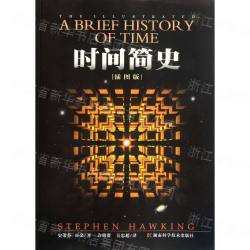-
内容大纲
《地下硬岩开采(英文版)》是矿业工程专业课程的配套教材,全英文授课,即授课、教材、课堂讨论、课后作业和考试均采用英语作为教学语种开展教学;是国内第一本地下采矿方法英文教材,系统总结了国内近年来地下采矿新方法实践效果良好的方法,尤其是融入了中南大学及国内知名矿山近30年金属矿山成功开采理论、技术与经验。 -
作者介绍
-
目录
Chapter 1 Underground Mine Development and Mining Method
1.1 Underground mine development
1.2 Underground mining method
1.2.1 Open stope method
1.2.2 Backfilling method
1.2.3 Caving method
References
Chapter 2 Underground Mining Method Selection
2.1 Introduction
2.2 Essential criteria for mining method selection
2.3 Factors influencing the decision
2.3.1 Geology of the deposit
2.3.2 Economic considerations
2.3.3 Technological factors
2.3.4 Safety, health, environmental concerns
2.3.5 Political and social conditions
2.4 Underground mining method selection and evaluation methods
2.4.1 Qualitative methods
2.4.2 Numerical scoring methods
2.4.3 Decision-making models
2.5 Conclusions
References
Chapter 3 Empirical Methods in Mining Geomechanics
3.1 Introduction
3.2 Rock mass evaluation systems
3.2.1 Rock mass rating system (RMR)
3.2.2 Q-system
3.2.3 Rock mass index (RMi)
3.2.4 Geological strength index (GSI)
3.3 Open stope stability graph
3.3.1 Main ideas
3.3.2 Limitations
3.4 Excavatability classification systems
3.5 Blastability assessment systems
3.5.1 Blastability assessment factors
3.5.2 Blastability assessment indexes
3.6 Rockburst classification criteria
3.6.1 Single indicator criteria
3.6.2 Multi-index indicators criteria
3.6.3 Rockburst chart
3.7 Orepass design in hard rock mines
3.7.1 Orepass diameter
3.7.2 Orepass longevity
3.7.3 Orepass wall stability
3.8 Conclusions
References
Chapter 4 Design of Hard Rock Pillar in Underground Space
4. 1 Introduction
4.2 Design methods
4.2.1 Empirical method
4.2.2 Numerical simulation method
4.2.3 Statistical assessment method
4.2.4 Artificial intelligence method
4.3 Hard rock pillar design by examples
4.3.1 Example 1
4.3.2 Example 2
4.3.3 Example 3
4.3.4 Example 4
4.3.5 Example 5
4.3.6 Example 6
4.3.7 Example 7
4.3.8 Example 8
4.4 Conclusions
References
Chapter 5 Criteria for Underground Mine Damage
5.1 Introduction
5.1.1 Damage-failure in underground excavations
5.1.2 Overview of the main types of damage criteria
5.2 Failure criteria for underground mines in numerical analysis
5.2.1 Stress-based failure criteria
5.2.2 Strain-based failure criteria
5.3 Vibration energy as damage criteria
5.4 Peak Particle Velocity (PPV) criteria and damage assessment
5.4.1 Peak Particle Velocity (PPV) criteria
5.4.2 Peak particle velocity and frequency as damage criteria
References
Chapter 6 Drilling and Blasting in Hard Rock
6.1 Introduction
6.2 Rock drills classification
6.2.1 Mounting type
6.2.2 Motive power of rock drills
6.2.3 Mechanics of rock penetration efficiency
6.3 Blasting design
6.3.1 Blasting design process
6.3.2 Methodology
6.4 Blast damage criteria
6.5 Suggested damage threshold levels for rock damage
6.6 Underground mine blasting design
6.6.1 Tunnel blasting
6.6.2 Shaft sinking
6.6.3 Production ring blasts
6.6.4 Underground mining large-diameter long hole blasting
References
Chapter 7 Rockburst Prediction and Prevention in Underground Excavation
7.1 Introduction
7.2 Rockburst statistical analysis
7.2.1 Disaster statistics analysis
7.2.2 Rockburst characteristics analysis
7.3 Rockburst prediction
7.3.1 Empirical criteria method
7.3.2 Simulation technology
7.3.3 Mathematical modeling method
7.3.4 Microseismic monitoring technology
7.3.5 Comments for different forecasting methods
7.4 Rockburst prevention
7.4.1 Rockburst support design principles and control strategies
7.4.2 Rockburst support methods
7.5 Conclusions
References
Chapter 8 Backfill Technology and Theory in Underground Hard Rock Mines
8.1 Introduction
8.2 Development history of backfill technology
8.2.1 Development process of backfill technology in the world
8.2.2 Development process of backfill technology in China
8.3 Role and importance of backfill
8.4 Research progress of backfill theory
8.4.1 The theory of paste-like and paste backfill technology
8.4.2 The new source of backfill materials
8.4.3 Bearing mechanism of backfill body
8.4.4 Studying the rheology of filled slurry
8.5 The classification of backfill methods
8.5.1 Mechanical backfill methods
8.5.2 Pneumatic backfill methods
8.5.3 Hydraulic backfill methods
8.5.4 Paste backfill methods
8.6 The future development of backfill technology
8.6.1 Investigating and creating novel inexpensive cement materials
8.6.2 High performance backfill equipment
8.7 Conclusions
References
Chapter 9 Underground Hard Rock Mining Looks to the Future
9.1 Definition of deep mining
9.1.1 Current definition of deep mining depth from industry
9.1.2 Academic definition of deep mining
9.1.3 Criteria definition for deep mining
9.2 Limited depth of underground mining
9.2.1 Definition of limited depth of underground mining
9.2.2 Factors affecting the depth of underground mining
9.2.3 Status of domestic and international research on deep mining
9.2.4 Deep laboratory and academi.'c exchange
9.2.5 Depth of open pit mining
9.2.6 Deep mining model and limited depth of extraction
9.2.7 Extreme mining depth
9.3 Hoisting method in deep mine
9.3.1 Definition of hoisting method
9.3.2 Factors affecting the choice of hoisting method
9.3.3 Types of hoisting methods
9.4 Cooling method in deep mine
9.4.1 Definition of cooling method
9.4.2 Factors affecting the choice of cooling method
9.4.3 Deep cooling method
9.4.4 Deep filling cooling
9.4.5 Deep mining joint cooling
9.4.6 Conclusion
9.5 Improvement and practice of deep mining
9.5.1 How to "turning harm into benefit"
9.5.2 Intelligent mining in deep mines
9.5.3 Conclusion
References
同类热销排行榜
- 故宫日历(公历2017年)(精)26.4
- 时间简史(插图版)18
- 工程数学线性代数(第6版十二五普通高等教育本科国家级规划教材)7.76
- 昆虫记(精)/经典译林8.72
- 数控铣床综合实训教程19.2
- 昆虫记(插图典藏本)(精)11.2
- 化工制图习题集(普通高等教育规划教材)7.2
- 化工制图(普通高等教育规划教材)15.8
- 生命急救技能14
- 时间简史(普及版)(精)15.2
推荐书目
-

孩子你慢慢来/人生三书 华人世界率性犀利的一枝笔,龙应台独家授权《孩子你慢慢来》20周年经典新版。她的《...
-

时间简史(插图版) 相对论、黑洞、弯曲空间……这些词给我们的感觉是艰深、晦涩、难以理解而且与我们的...
-

本质(精) 改革开放40年,恰如一部四部曲的年代大戏。技术突变、产品迭代、产业升级、资本对接...

 [
[
